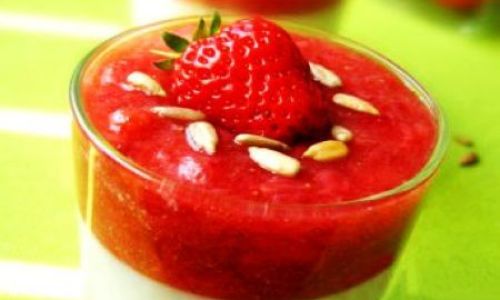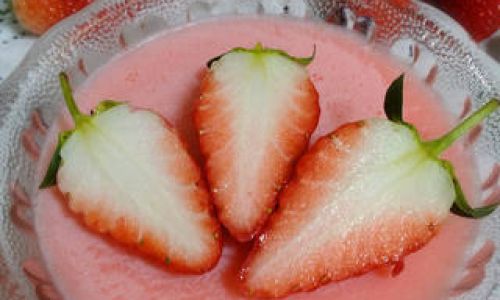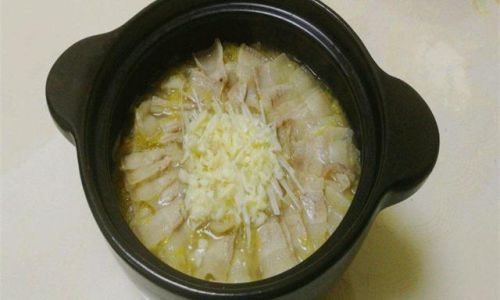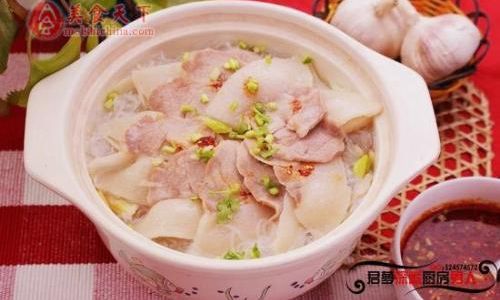Introduction
Strawberry pudding is a timeless dessert that combines the vibrant sweetness of fresh strawberries with a creamy, velvety texture. This dessert is a crowd-pleaser, perfect for summer gatherings, family dinners, or simply as a comforting treat to enjoy after a long day. Unlike store-bought versions, homemade strawberry pudding allows you to control the quality of ingredients, ensuring a burst of natural flavor without artificial additives. Whether you’re a seasoned baker or a novice in the kitchen, this recipe is designed to be approachable, rewarding, and utterly delicious. In this comprehensive guide, we’ll explore the art of making strawberry pudding from scratch, covering everything from ingredient selection to presentation tips. By the end, you’ll have the skills to create a dessert that’s as visually stunning as it is tasty.
Ingredients: The Foundation of Flavor
The success of any pudding hinges on the quality of its ingredients. For strawberry pudding, fresh, ripe strawberries are non-negotiable. Their natural sweetness and tartness form the dessert’s soul. Here’s a breakdown of the key components:

- Strawberries (2 cups, fresh or frozen): Opt for plump, bright-red berries with a sweet aroma. If using frozen, thaw them first and drain excess liquid.
- Sugar (½ cup, granulated): Adjust to taste; strawberries’ natural sugar content may vary.
- Milk (2 cups, whole or 2%): Full-fat milk yields a richer texture, but lower-fat options work for a lighter result.
- Heavy Cream (½ cup): Adds decadence and smoothness. For a dairy-free alternative, use coconut cream.
- Cornstarch (¼ cup): The thickening agent that gives pudding its signature consistency.
- Egg Yolks (3 large): Contribute to richness and help stabilize the pudding.
- Vanilla Extract (1 tsp): Enhances the strawberry flavor with a warm, aromatic note.
- Salt (¼ tsp): A pinch to balance sweetness.
- Butter (1 tbsp, unsalted): Optional, but adds a luxurious finish.
- Lemon Juice (1 tbsp, freshly squeezed): Brightens the strawberry taste.
Equipment: Tools of the Trade
To streamline the cooking process, gather these essentials:
- A medium saucepan (preferably heavy-bottomed to prevent scorching).
- A fine-mesh sieve (for straining the pudding and removing lumps).
- A whisk and a wooden spoon (for stirring and temperature control).
- A heatproof mixing bowl (to cool the pudding and prevent skin formation).
- Plastic wrap (to cover the pudding’s surface during chilling).
- A blender or food processor (for pureeing strawberries).
- Measuring cups and spoons (precision is key for consistency).
Step-by-Step Instructions: Crafting Perfection
Preparing the Strawberry Puree
Begin by washing and hulling the strawberries. Slice them into quarters and transfer to a blender or food processor. Pulse until smooth, scraping down the sides as needed. For a chunkier texture, reserve ¼ cup of diced strawberries to fold in later. Strain the puree through a fine-mesh sieve to remove seeds, if desired. This step ensures a silky-smooth pudding, though leaving the seeds intact adds a rustic charm.
Creating the Pudding Base
In a medium saucepan, combine the milk, heavy cream, and sugar. Warm the mixture over medium heat, stirring occasionally, until tiny bubbles form around the edges—this should take about 5–7 minutes. Do not let it boil. In a separate heatproof bowl, whisk the egg yolks and cornstarch until smooth. Gradually pour half of the warm milk mixture into the egg yolks, whisking constantly to temper them. This step prevents the eggs from curdling.
Combining and Thickening
Return the tempered egg mixture to the saucepan with the remaining milk. Cook over medium-low heat, stirring continuously with a wooden spoon. The mixture will thicken gradually—look for bubbles that “plop” slowly, indicating the cornstarch has activated. This process takes 8–10 minutes. Be patient; rushing it may result in a grainy texture.

Infusing Strawberry Flavor
Once the pudding base coats the back of the spoon, remove it from heat. Stir in the strawberry puree, lemon juice, vanilla extract, and salt. Taste and adjust sweetness with additional sugar if needed. For an extra layer of richness, whisk in the butter until melted.
Straining and Chilling
Pass the pudding through a fine-mesh sieve into a clean bowl to eliminate any lumps. Press gently with the back of a spoon to extract maximum flavor. Cover the surface directly with plastic wrap to prevent a skin from forming. Chill in the refrigerator for at least 4 hours, or until set.
Final Touches: Assembly and Presentation
Once chilled, the pudding can be served as is or layered in parfait glasses with crushed graham crackers, whipped cream, or fresh strawberry slices. For a elegant finish, garnish with a strawberry fan, mint sprig, or a drizzle of balsamic reduction.
Tips for Success: Avoiding Common Pitfalls
- Prevent Curdling: Always temper eggs slowly by adding hot liquid in a thin stream while whisking vigorously.
- Lump-Free Texture: Straining the pudding ensures a velvety finish. Don’t skip this step!
- Consistent Thickness: Cook the pudding until it reaches 160°F (71°C) on an instant-read thermometer for optimal thickening.
- Storage: Pudding keeps refrigerated for up to 3 days. Press plastic wrap directly onto the surface to prevent drying.
Variations and Customizations

- Vegan Strawberry Pudding: Substitute milk with almond or oat milk, and use cornstarch or arrowroot powder as a thickener. Aquafaba (chickpea brine) can replace egg yolks for a vegan-friendly emulsifier.
- Spiked Pudding: Add a splash of Chambord (raspberry liqueur) or Grand Marnier for an adult twist.
- Chocolate-Dipped Strawberry Pudding: Layer the pudding with chocolate ganache and garnish with chocolate-covered strawberries.
- Low-Sugar Option: Use monk fruit sweetener or erythritol instead of sugar.
Serving Suggestions: Elevating the Experience
- Parfait Style: Layer pudding with vanilla wafer crumbs, diced strawberries, and whipped coconut cream.
- Tartlets: Spoon pudding into pre-baked mini tart shells and top with fresh berries.
- Pudding Pops: Freeze the mixture in popsicle molds for a refreshing frozen treat.
- Brunch Addition: Serve in small mason jars alongside pancakes or waffles.
Storage Guidelines: Preserving Freshness
- Refrigeration: Store in an airtight container for up to 3 days. Avoid freezing, as it alters the texture.
- Reheating: Pudding is best served cold, but if you prefer it slightly warmed, microwave in 10-second intervals, stirring gently.
Troubleshooting Common Issues
- Pudding Won’t Thicken: Ensure the cornstarch is fully dissolved before cooking. Increase heat slightly and stir continuously.
- Grainy Texture: Overcooking can break the cornstarch’s structure. Next time, remove the pudding from heat as soon as it thickens.
- Weeping or Separation: This occurs if the pudding isn’t chilled properly. Always press plastic wrap directly onto the surface.
- Bland Flavor: Ripe strawberries are key. If berries are out of season, add a touch of strawberry extract or a splash of fruit juice.
The Science Behind Strawberry Pudding
Understanding the chemistry of pudding-making can elevate your skills. Cornstarch, a polysaccharide, thickens liquids when heated above 203°F (95°C). Its long-chain molecules absorb liquid and swell, creating a gel-like network. Egg yolks, rich in lecithin, act as emulsifiers, binding fat and water molecules for a unified texture. The acidity from lemon juice not only brightens flavor but also helps stabilize the mixture by denaturing proteins gently.

Cultural Significance of Strawberry Desserts
Strawberries have been cherished for centuries, with references dating back to ancient Rome. In 16th-century Europe, they symbolized purity and passion, often featured in wedding feasts. Today, strawberry desserts like pudding evoke nostalgia, reminiscent of childhood summers and family picnics. This recipe bridges tradition and innovation, offering a modern twist on a classic favorite.
Conclusion: Savoring the Fruits of Your Labor
Crafting homemade strawberry pudding is a labor of love that rewards you with a dessert far superior to any store-bought alternative. By mastering the balance of sweetness, acidity, and texture, you’ve created a dish that delights the senses and nourishes the soul. Whether enjoyed alone or shared with loved ones, this pudding is a testament to the joy of simple, wholesome cooking. So next time strawberries are at their peak, seize the opportunity to turn them into something extraordinary—one spoonful at a time.





0 comments